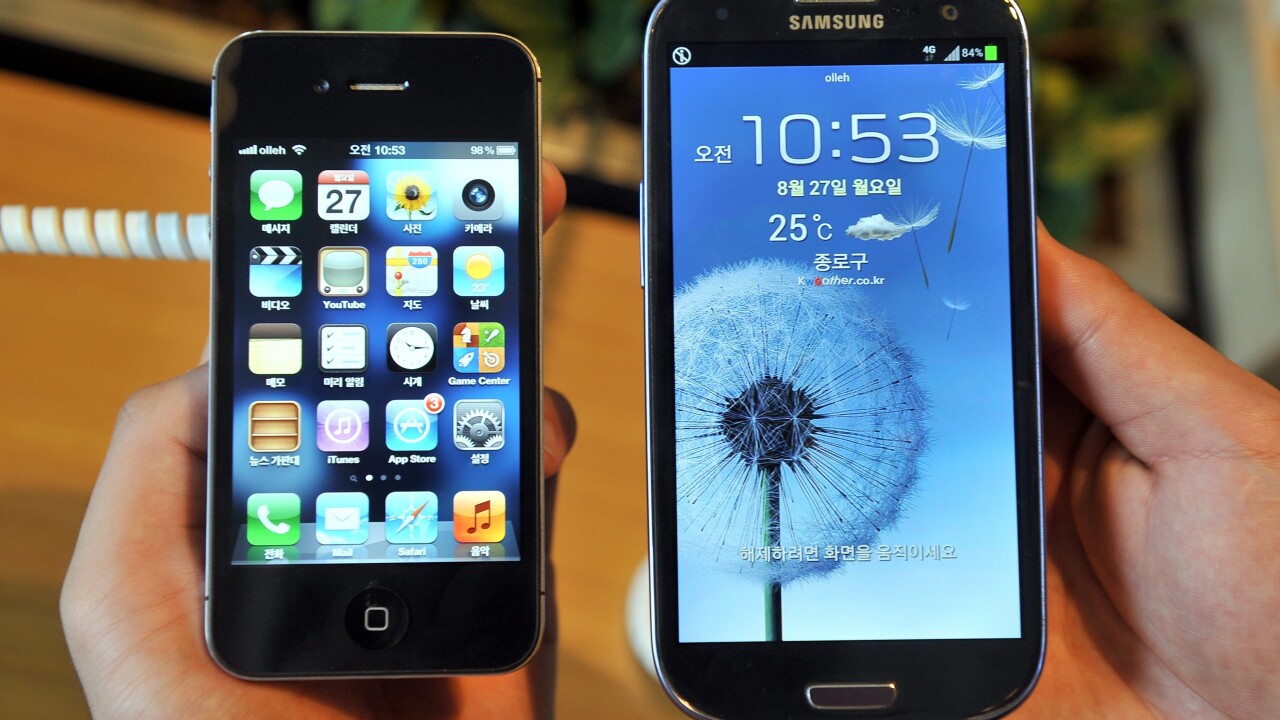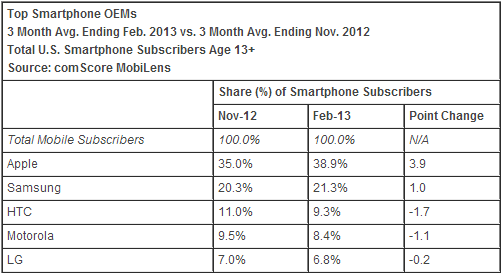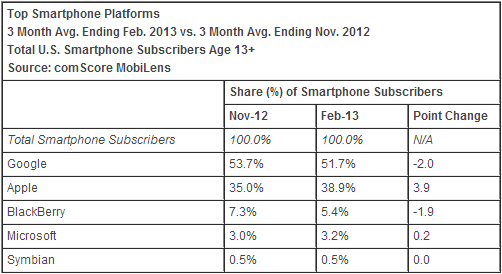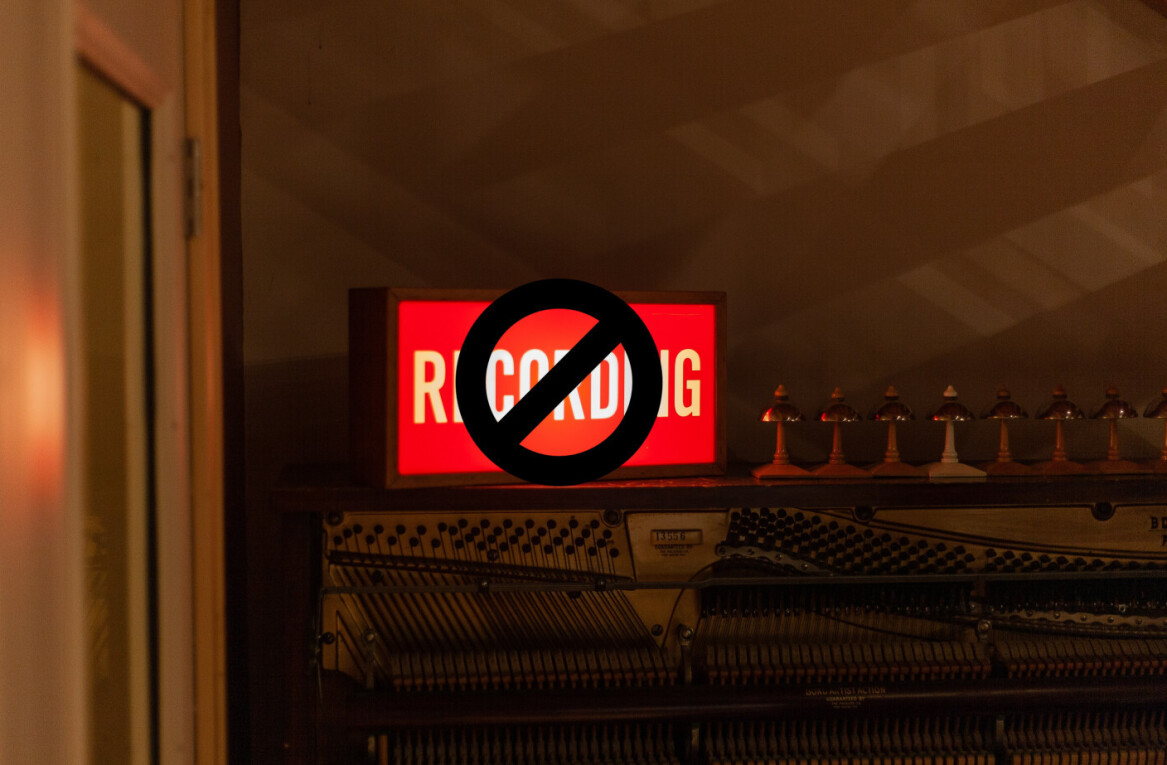
In the US, Apple started 2013 as the top OEM and it has only further increased its lead in February. Samsung is gaining as well, but not quite as quickly. Rounding out the top five are HTC, Motorola, and LG, all of which lost share.
In the platform space, Google is still first courtesy of Android, Apple is second with iOS, but the latter is gaining on the former. In fact, Apple’s gains in the hardware space have been so large recently that not only did iOS gain significantly but Android has taken a hit for the second month running. Again, rounding out the top five are BlackBerry, Microsoft, and Symbian.
The latest data comes from comScore, which as usual surveyed over 30,000 mobile subscribers in the US. The analytics firm says 133.7 million Americans owned smartphones (57 percent mobile market penetration) in January, up 8 percent since November.
Between those three months, here is how the top five smartphones OEMs fared:
As you can see, Apple gained 3.9 percentage points in terms of smartphone subscribers (from 35.0 percent to 38.9 percent) while Samsung jumped 1.0 percentage points (from 20.3 percent to 21.3 percent). HTC fell 1.7 points (from 11.0 percent to 9.3 percent), Motorola dropped 1.1 points (from 9.5 percent to 8.4 percent), and LG dipped 0.2 points (from 7.0 percent to 6.8 percent).
Samsung and Apple gained a combined 4.9 points while the other three lost 3.0 points together. In other words, the duo continues to steal share from OEMs even not in the top five, at least in the US.
It appears that the iPhone 5 is helping keep Apple ahead, while Samsung is still managing to push forward. With the Galaxy S4 announced but not available till April, we don’t expect Samsung to outgain Apple before the device hits the market.
HTC’s continued losses don’t surprise us, and it seems that the company is pretty much betting everything on its One device. Google meanwhile still hasn’t figured out what to do with Motorola, and LG’s bleeding has restarted again, despite the Nexus 4.
On the software side, Google is still dominating but Apple is gaining steadily as of late. Android has dropped for the second month in a row, and Microsoft has actually managed to gain share for the first time:
Samsung’s gains are simply not enough anymore to offset the losses of other Android makers as well as Apple’s iPhone 5 push. Google lost 2.0 percentage points between November and February (down from 53.7 percent to 51.7 percent). Apple meanwhile increased its share by 3.9 percentage points (moving from 35.0 percent to 38.9 percent, which happens to be identical to the figure for its smartphone share).
BlackBerry was down 1.9 points (from 7.3 percent to 5.3 percent), Microsoft gained 0.2 points (from 3.0 percent to 3.2 percent), and Symbian seems to have hit rock bottom at 0.5 percent. BlackBerry has only just celebrated its BlackBerry 10 launch in the US, so we won’t see an improvement till later as the company continues to be the biggest loser in these studies, month after month. At the same time, we said last month that Microsoft’s fall appeared to be slowing, “suggesting it may finally start gaining soon with Windows Phone” and it appears that may have finally happened – though it’s too early to tell.
We don’t expect Google’s drop to continue (the One and S4 will likely bring a rebound). The Android-iOS duopoly in the US is still solid at 90.6 percent market share, however, and a disruption is more than overdue.
Top Image credit: Jung Yeon-Je/Getty Images
Get the TNW newsletter
Get the most important tech news in your inbox each week.






